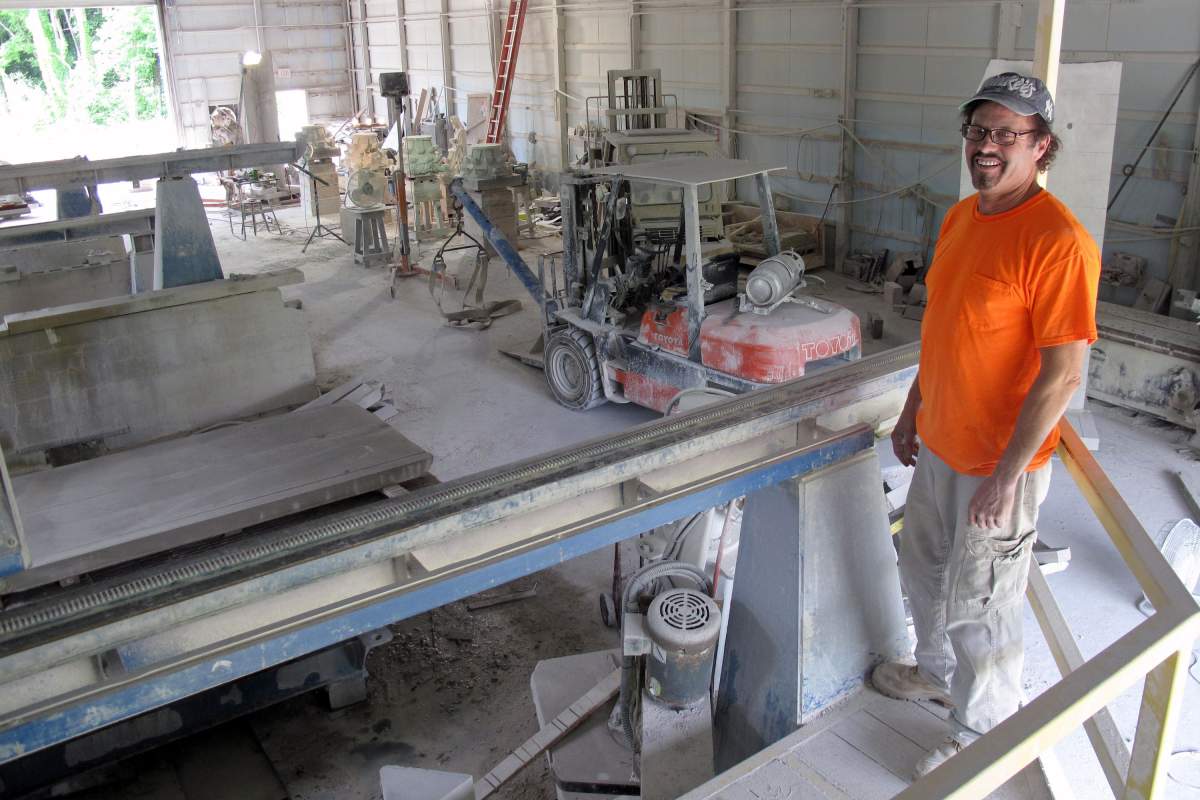
Looming Deadline
You know you've reached Angelo Stone Company when you see the massive blocks of limestone stacked alongside the gravel road. Founder William Galloway always has three or four projects going at once so he can stagger his deadlines.
The project at the top of his to-do list right now is the commission from the Governor's Art Awards. He was selected from a field of traditional artists from around the state invited to submit proposals to create the awards.
The Music Of The Stones
White powder covers every inch of his airplane hanger of a studio. The largest machine in the studio boasts a 60-inch diamond blade that can cut 2-foot thick stone slabs clean to 1/16 of an inch. It's 40 years old but it runs perfectly every day. He wears protective ear plugs whenever he's in the studio and after experiencing the wail of the blade through the stone, you understand why!
Watching the speed and precision of the diamond blade, it's hard to imagine carving the stone by hand, but Galloway says everything he does with the limestone could be achieved with a hammer and chisel. The stone rings when struck with these handheld tools. "I've heard people say that the stones sound like they're singing," he adds.
Big And Small Dancers
Galloway calls the six statues he carved for this year's Governor's Art Awards "The Dancers." He managed to transform blocks of stone into 16-inch, 4-pound sculptures that the honorees can cradle in their arms.
He is also creating matching 10-foot tall versions to be displayed at the event. He's hoping these monuments will bring awareness to the limestone carving industry, "Because we're really dwindling on the numbers with the stone carvers now. There are just a few guys left. There's really nobody new who's come into it for a long time," he says.
Quarry Classes
Back in art school, he knew he wanted to specialize in an enduring medium, but bronze sculpture was prohibitively expensive and he was never interested in welding. When he settled on stone carving, he couldn't find anyone to teach him.
So he went to the quarries. "I thought I'll learn the mechanics of it and then I'll make my own art," he says.
He says this sort of apprenticeship is the only way to learn how to work with limestone. "What the universities told me when I talked to them about this is, you can't learn it in four years, you can't learn it in 6-7 years. So how can we sell it as part of our program?"
Luxurious Limestone
He would gladly accept apprentices in his studio if only his sales were up.
Stone carvings are a luxury item, so he sees his commissions ebb and flow with the economy.
"It's expensive to buy a stone sculpture. You have to move it, you have to insure it. It costs you money right out of the gate," he says. "It's like a dog almost. You buy it and then you start paying for it."






